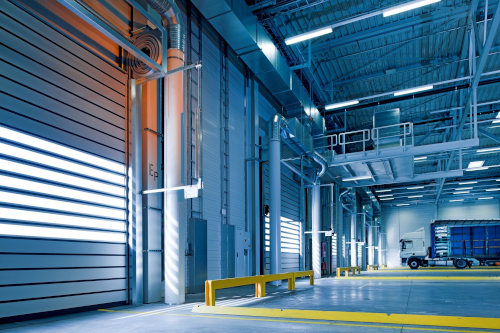To get the very best out of your business, you must have the very best in loading technology solutions. The more disorganised you are, and the more adjusting of trailers and vehicles you need to do to facilitate getting goods on and off vehicles wastes time and is potentially dangerous for drivers, loaders, and other site users.

But what exactly is available to make your day-to-day business operations run smoothly, getting deliveries and products in and out of your facilities effectively and safely? Streamlined and dedicated loading technology can help take the hassle out of loading and unloading and ensure that vehicle and people’s movement in the area is more controlled and can operate at maximum efficiency and safety.
When it comes to getting in front of the right people for industrial loading technology solutions, companies such as Hormann, Europe’s leading door, frame, loading and operating technology manufacturer, can offer design advice and manufacturing solutions that best fit your business needs and the space you have.
Here is our guide to some of the technology that can make your business loading and unloading a breeze:
Docking systems
Docking systems offer DOBO (docking before opening) technology. Lorries dock with closed doors, and all components from the docking assistant, dock shelter and dock leveller and movable buffers are matched for optimal timing and performance.
The DOBO system enables closed cold chains and hygienic goods transport, especially suitable for food and temperature-sensitive product transfer. These closed till needed docking systems reduce energy consumption, prevent break-ins, and have custom clearance advantages. Incorporation is particularly easy when used in conjunction with loading houses.
Loading Houses
Loading houses are constructed to meet all narrow design stability and safety requirements for the safe and efficient provision of loading and unloading goods. They offer a complete loading station when used with enclosed docking loading technology.
Telescopic Link Arms
Extra height telescopic link arms give additional height clearance for tall vehicles by allowing the entire front of the flap dock shelter frame to move upwards. When vehicles are unloaded this can prevent damage as they rise as goods weight is removed, also when swap trailers lift during parking.
A dock shelter prevents top edge damage and can be an extra on new dock shelters or retrofitted to existing shelters.
Cushioned Dock Seals
Cushioned dock seals for transit and parcel van services consist of three foam-filled cushions which fit snugly to the vehicle and the loading bay. Seals also work for hinged doors of 180 and 270 degrees. Dock seals can be tailored to specifically fit the vehicles in your fleet as well as standard designs available for the most common transit van shapes.
Loading Platforms
Optimal loading platforms with the right platform height are essential to ensure the loading height difference to the lorry loading surface is as small as possible. The load can be moved in or out in a single horizontal movement. It’s essential to ensure that transitions are as flat as possible for maximum speed and efficient, safe loading.
Thermal Insulated Doors
Energy-saving thermal insulated doors in front of the dock leveller ensure lower temperature transfer levels. Closed cold chains are maintained with better temperature control as the DOBO docking before opening the door system is only opened when the vehicle is in place.
Mechanical Dock Levellers and Loading Platforms
Mechanical dock levellers and loading platforms work effectively at no or small height differences. Hydraulic systems help when there are more considerable height differences and distances and base frames for loading houses. If you regularly have different vehicle types on loading platforms, you may benefit from scissor lift tables for loading at ramp level and lifting or lowering ability.
Foot guard plates, anti-slip profiling and safety markers will also help you maintain a safe and efficient loading area, which can improve the safety and the productivity in the loading environment.